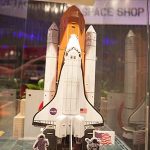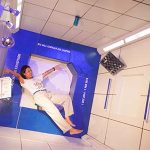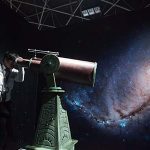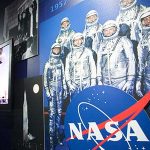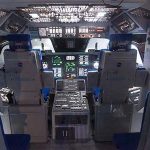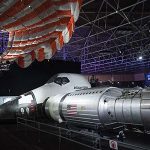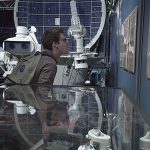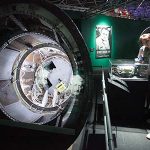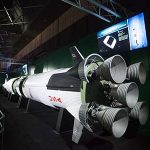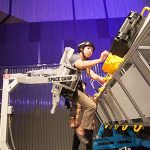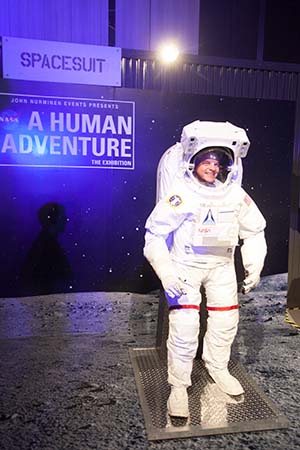
Back in the 60s and 70s everyone was looking to the stars as humans took their great leap forward with the Apollo Moon missions. Suddenly it was every child’s dream to become an astronaut, and we all looked forward to exploring new worlds.
 But the last man to step on the moon was Eugene Cernan in 1973. Have we lost that innate human drive to explore and got too caught up in terrestrial matters? Well, judging by the huge popularity of the exhibition NASA: A Human Adventure, currently on at CentralPlaza Ladprao’s Bangkok Convention Centre, it seems not.
But the last man to step on the moon was Eugene Cernan in 1973. Have we lost that innate human drive to explore and got too caught up in terrestrial matters? Well, judging by the huge popularity of the exhibition NASA: A Human Adventure, currently on at CentralPlaza Ladprao’s Bangkok Convention Centre, it seems not.
This is the first time this exhibition has been held in Southeast Asia and since the doors opened on 1 December, 2014, thousands of people have been there to see the displays, pose in space suits and even try the G-Force simulator, which recreates the feelings experienced during a shuttle launch (not for those with weak stomachs).
The exhibition takes visitors through the history of space exploration so far. From visionaries and dreamers; such as, Jules Verne and HG Wells who wrote about exploring the moon and tried to envisage how it might be done, to the intense Cold War competition that led to Soviet Russia putting the first satellite and manned craft into orbit and ending with men walking on the moon.
Visitors can explore replicas of NASA’s manned spacecraft from the Mercury capsules, (which were so small that the first astronauts joked they wore them rather than rode in them) to the Gemini ships and the Apollo command module. There’s even a mock-up of the command desk of the Atlantis shuttle. Alongside the large displays are hundreds of objects, both Russian and American, some of which were used in real space missions.
The exhibition makes you think of the hundreds of amazingly skilled visionaries, engineers and scientists who worked together to send a handful of brave explorers beyond the Earth’s gravity, to walk on another heavenly body and to return safely. Achievements that show what humans can do when we put our minds to it.
Despite the amazing technology and rockets on display, it is the human aspect of the exhibition that shines through. People queued to see the food astronauts ate, what they wore and how they went to the bathroom (often in a Maximum Absorbency Garment (MAG), better known as a nappy or diaper if you’re curious). But it was the large image of Charlie Duke’s family photo which he left on the Moon in the 1972 Apollo 16 expedition that really humanised the exhibition. It showed how everyone’s thoughts turn to their family when they’re a long way from home.
The huge popularity of NASA: A Human Adventure shows there’s a hunger in Thailand for more educational exhibitions. Let’s hope we see more such shows to inspire the next generation of thinkers. Who knows? Perhaps the next person to visit the moon might look back and say “Sawasdee Earth!”
Notes
– NASA: A Human Adventure will be closed on 1 February, 2015.
– Tickets cost 400 Baht (250 Baht for children) on weekdays and 500 Baht (350 Baht for children) on weekends and holidays, and can be purchased from Thai Ticket Major
– The exhibition was brought to Southeast Asia by BEC-Tero and Thaicom PLC.
